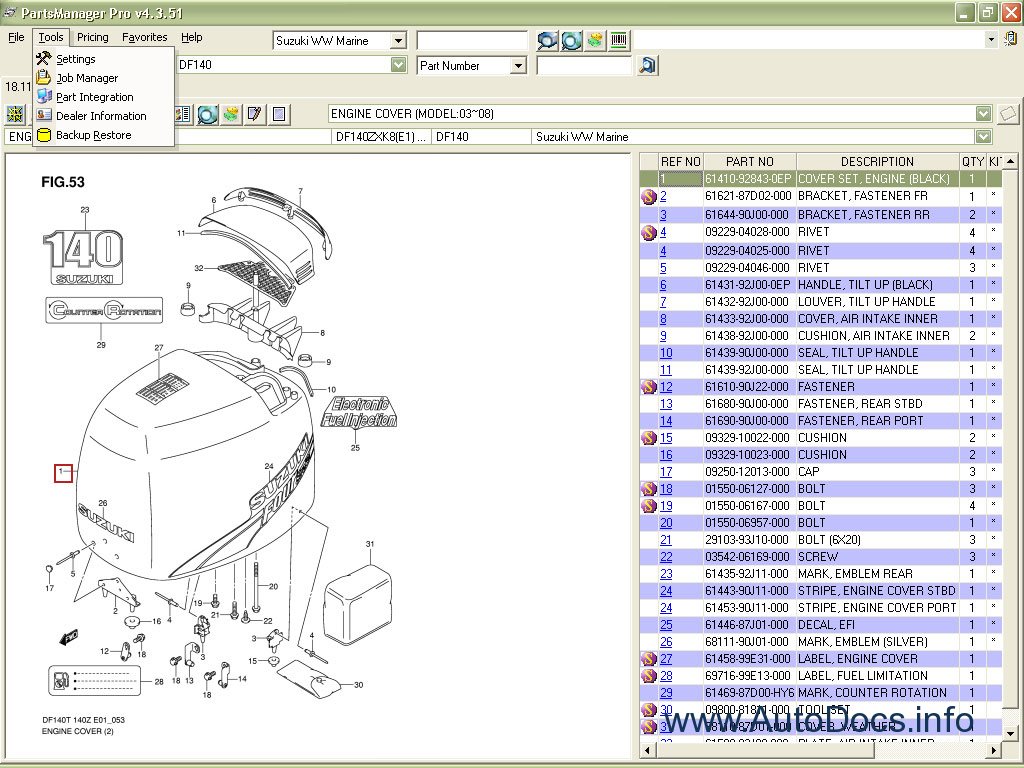

Pricing guide current at the time of writing editorial. Learn MoreĭisclaimerIn most cases, attends new vehicle launches at the invitation and expense of vehicle manufacturers and/or distributors.Įditorial prices shown are a "price guide" only, based on information provided to us by the manufacturer. has reviewed the content to ensure it is relevant. Sponsored & Advertorial ContentIn some cases, will work with advertisers to bring you relevant content that has been made possible by advertisers and their partners. Call the Haines Group, on Ph: (07) 3271 4400 for your nearest dealer. Prop and servicing prices from Coast To Coast Boating, phone (02) 4970 5541. *As per manufacturer's recommended schedule excluding parts. Ignition system: CD w/ mechanical timing advanceĬharging circuit: 6.7amps w/o voltage regulation The DT40 is rated "1 star" by OEDA and has a two-year warranty for recreational use.Įngine type: Loopcharged premix two-stroke electric-start remote control The DT40 is cost effective to buy and operate for boaters not interested in extended trolling, and with the availability of Isopropyl Alcohol additives, which prevent the premix going stale for up to a year, there's no need to ditch fuel after a couple of months. Servicing intervals are every 50 hours or six months after the 20-hour initial checkup, and the waterpump impeller replaced every 100 hours or yearly.ĭespite the popularity of oil injection in carbie two-strokes in this power range, there's still a niche for a premix engine. The throttle/gearshift and ignition timing advance linkages, carbie, plugs and fuel filter are easily reached. Powerhead access is very good, particularly in the DT40 which doesn't have an under-cowl oil tank.

Although it was raucous at these revs we could talk normally at the helm. Through a full-lock figure of eight turns at these revs there was prop ventilation and we had to trim in the leg two holes to prevent this.Īt fast-cruise revs of 5000 the average was 44.8kmh and at WOT (5850rpm) the averages were 51.8kmh and 20.2lt/h.

A clean plane was at 34.0kmh and 3500rpm, and cruising at 4000rpm the averages were 36.1kmh and 8.8lt/h. Pushing a total of 500kg the average at 2000rpm was 10.4kmh and 15.7kmh at 3000rpm with vibration levels comparable to a three-cylinder two-stroke. Providing the electric choke was used correctly, it started instantly cold and reached normal temperature quickly, with oil smoke disappearing above 2000rpm.īecause of the absence of power trim we used the fifth trim hole to provide an effective compromise between easy planing and reasonable cruising speeds. Like most large displacement twin-cylinder loopcharged outboards it had excessive vibration below 2000rpm and was unsuitable for trolling. On a Stessl 4.3 runabout and spinning a 13in prop, the loan rig was slightly underpropped, but performed well above 2000rpm. Unfortunately, power trim and tilt (or even shallow-water drive) is still not available, limiting the DT40's appeal to older boaters trust me, manually tilting the engine was not easy!
#Suzuki dt40 outboard diagram manual#
Apart from not having oil injection, it has all the DT40C features such as a single carbie, rev limiter, stainless steel waterpump impeller housing, and manual overhead recoil starter in addition to electric starting. The DT40 develops a peak torque of 58Nm at 4500rpm, whereas the four-stroke DF40 develops 62.4Nm from 2500 to 4000rpm. With a total of five per cent WOT operation the Suzy averaged 6.0lt/h over this period, not bad for a carbie two-stroke 40! This is a shame as the DT40C I borrowed for two months some years ago was completely reliable and averaged a fuel/oil ratio of 83:1 over the 19.1 hours I evaluated it. However, although the DT40C appears to still be available in some markets, The Haines Group elected to import the premix version, which operates at a fixed 50:1 ratio after 10 hours on 25:1. The system varied the fuel/oil ratios from 50:1 at WOT down to 120:1 when trolling and was very reliable, providing different oils were not mixed together. Only straight petrol passed through the carbie, eliminating the need to run an engine out of fuel at the end of a day's boating. This functioned by injecting oil into the crankcase where it mixed with petrol and lubricated the crankshaft, conrod bearings and cylinder walls before being burnt in the combustion chamber. Originally introduced to Australia in 1985 as the DT40C, this engine was the smallest Suzuki outboard to have multipoint oil injection. Last year, The Haines Group rounded out its carbie two-stroke range of Suzuki outboards by releasing the DT40.


 0 kommentar(er)
0 kommentar(er)
